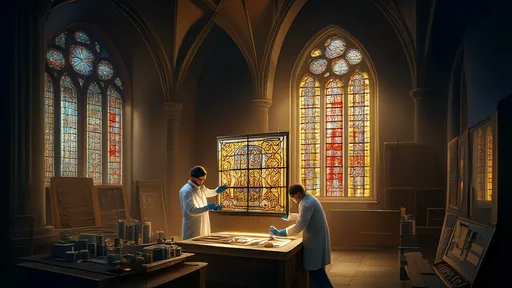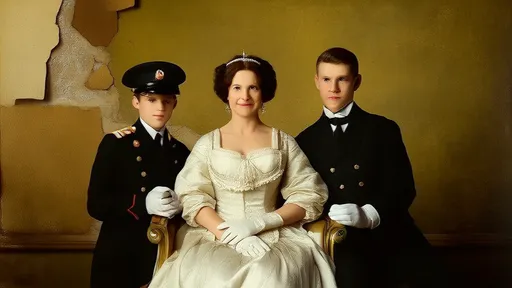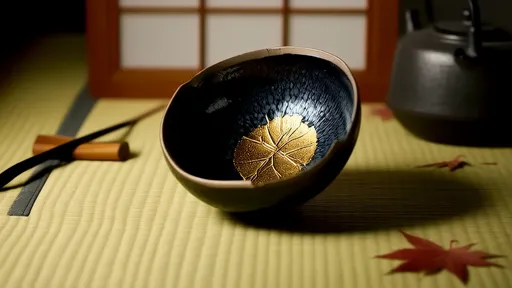The art world was recently captivated by the meticulous restoration of a centuries-old family portrait, its surface once obscured by layers of grime and smoke. The painting, believed to have been created in the late 17th century, had spent decades hanging above a fireplace in an English manor house, its vibrant colors and intricate details gradually fading beneath a shroud of tobacco smoke and soot. What emerged from beneath this veil was not just a stunning work of art, but a window into a forgotten chapter of history.
Conservators at the renowned Heritage Art Restoration Center in London began the painstaking process by documenting every inch of the painting through high-resolution imaging. "The first challenge was determining whether the discoloration was merely surface dirt or something more sinister," explained lead conservator Eleanor Whitmore. "We discovered that while tobacco residue accounted for much of the darkening, generations of candle smoke had created a particularly stubborn patina that required specialized treatment."
As the cleaning progressed, unexpected details began to emerge. The portrait, originally thought to depict a simple nuclear family, revealed additional figures that had been completely invisible beneath the grime. Infrared reflectography uncovered preliminary sketches showing that the composition had been altered during painting - a common practice that often hints at changing family dynamics or social pressures. "We found evidence that two children had been painted over, their forms barely visible beneath the final layers," Whitmore noted. "This discovery sent historians scrambling through parish records to understand why these family members might have been erased from visual memory."
The restoration process took an unexpected turn when conservators discovered that portions of the smoke damage couldn't be removed through conventional methods. Analysis revealed that certain areas had been affected by a peculiar chemical reaction between the oil paints and sulfur compounds in the air. "The smoke had essentially become part of the paint's chemistry in these sections," Whitmore said. "Rather than risk damaging the original pigments, we made the controversial decision to preserve this 'smoke shadow' as part of the painting's history."
Historical researchers working alongside the conservation team identified the family as the Ashworths, minor gentry from Lancashire whose fortunes rose dramatically during the Industrial Revolution. The portrait's hidden details - a merchant's ledger tucked under the patriarch's arm, the subtle inclusion of factory smokestacks in the background window - tell a story of social climbing that was literally being obscured by the very industrial prosperity it celebrated. Art historian Dr. Jonathan Pierce observes: "This painting serves as both celebration and unintended critique of the era. The wealth that allowed them to commission such a portrait came from industries that ultimately blackened its surface."
Perhaps most remarkably, the restoration has reignited interest in the Ashworth descendants. Current family members, unaware of the portrait's existence, have come forward with letters and diaries that help contextualize the painting's mysteries. One journal entry from 1823 mentions "dear Uncle Thomas and his unfortunate boys" - likely referring to the painted-over children. These personal accounts have allowed historians to reconstruct a narrative of inheritance disputes and scandal that explains the compositional changes.
The restored portrait will be displayed at the National Portrait Gallery next month as part of an exhibition exploring how conservation technologies are rewriting art history. In an innovative curatorial decision, the display will include time-lapse footage of the cleaning process alongside ultraviolet and infrared images that reveal the painting's hidden layers. Visitors will literally be able to watch history being uncovered before their eyes.
This project stands as a testament to how art conservation has evolved from simple cleaning to multidisciplinary historical investigation. The smoke that once obscured the Ashworth family's portrait has ironically preserved it, protecting the pigments from light damage while concealing its secrets. As Whitmore reflects: "We didn't just clean a painting - we peeled back time itself, layer by delicate layer." The restored work now tells two stories simultaneously: that of an ambitious Georgian family, and of its own remarkable journey through the centuries.

By /Jul 9, 2025

By /Jul 9, 2025

By /Jul 9, 2025

By /Jul 9, 2025

By /Jul 9, 2025

By /Jul 9, 2025

By /Jul 9, 2025

By /Jul 9, 2025

By /Jul 9, 2025

By /Jul 9, 2025

By /Jul 9, 2025

By /Jul 9, 2025

By /Jul 9, 2025

By /Jul 9, 2025

By /Jul 9, 2025

By /Jul 9, 2025

By /Jul 9, 2025

By /Jul 9, 2025